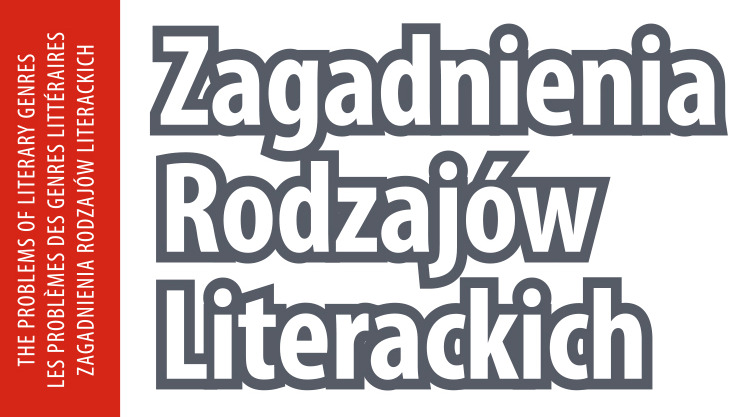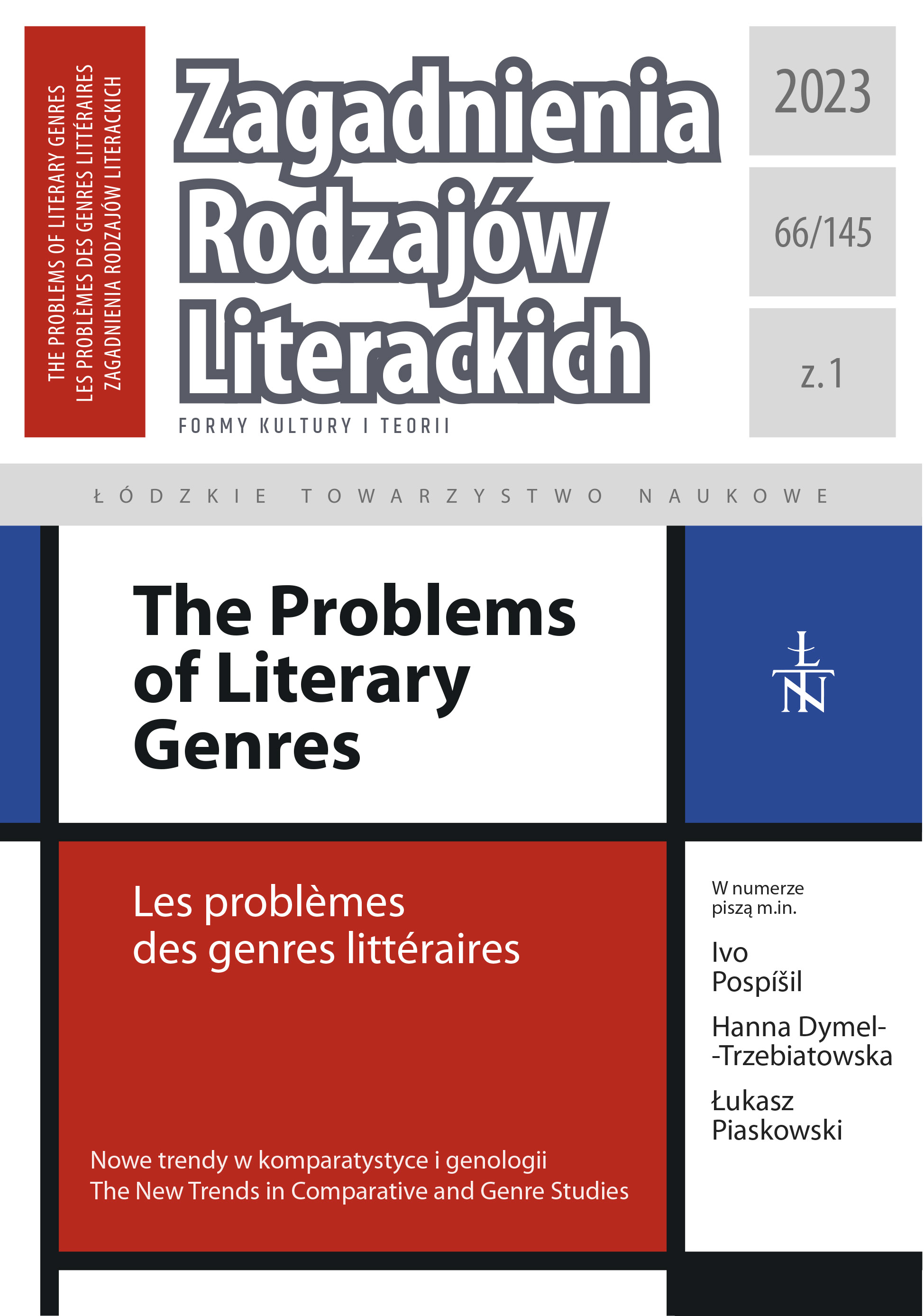Kto uratuje Ariadnę? — palingeneza kreteńskiego mitu w popfeministycznych retellingach (na przykładzie „Pani labiryntu” Magdy Knedler i „Ariadny” Jennifer Saint)
DOI:
https://doi.org/10.26485/ZRL/2023/66.1/18Słowa kluczowe:
myth; feminism; popculture; retelling; Ariadne; Jennifer Saint; Magda KnedlerAbstrakt
The aim of this article is to analyze popfeminist retellings of known mythical stories. For the purposes of this text, two of the most popular novels on the publishing market have been selected at present — Jennifer Saint’s Ariadne and Magda Knedler’s Pani Labiryntu. Before analyzing the above novels, the most important theoretical findings regarding the presence of myth in contemporary, recent literature and pop culture will be recalled. A fundamental issue that needs to be addressed will be the objection of some researchers who claimed that myth is degenerating in popular literature. The findings of feminist criticism, whose research¬ers still emphasize the lack of female mythology, will also be important, as well as the fact that contemporary writers attempt to restore female genealogy in their works by reinterpreting stories embedded in culture, such as the myth of Theseus, etc. The analysis of the mentioned novels will be carried out on two levels: I will look at how the authors create women in Ari¬adne’s immediate surroundings, as well as men. This procedure will be aimed at answering the question posed in the title — who will save Ariadne? The result of the aforementioned analysis will be the thesis that contemporary retellings still reproduce stereotypical issues regarding patriarchal narratives despite the creation of pseudo-feminist heroines who, lost in the issues of the nature of identity and belonging, cannot fully free themselves from the power of violent men and make the same mistakes.
Liczba pobrań
Bibliografia
Backès Jean-Louise (2008), Quelles réécritures pour les mythes anciens [w:] Métamorphoses du mythe. Réécritures anciennes et modernes des mythes antiques, red. P. Schnyder, L’Harmat¬tan, Paryż.
Brunel Pierre (1998), Littérature comparée: les théories de l’imaginaire et l’exégèse des mythes lit¬téraires [w:] Introduction aux méthodologies de l’imaginaire, red. J. Thomas, Ellipses, Paryż.
Całek Anita (2017), Retelling w literaturze fantasy: od renarracji do metafikcji [w:] Tekstowe światy fantastyki, red. M. Leś, W. Łaszkiewicz i P. Stasiewicz, Wydawnictwo PRYMAT, Białystok.
Couffignal Robert (1980), Le Drame de l’Eden: le récit de la Genèse et sa fortune littéraire, Publi¬cations de l’Université de Toulouse-Le Mirail, Tuluza.
Dancourt Michéle (2002), Dédale et Icare. Métamorphoses d’un mythe, L’Harmattan, Paryż.
De Carlo Andrea (2020), Arachne, Atena i ich córki. Strategia pajęczycy we współczesnej polskiej literaturze kobiecej [w:] Boginie, bohaterki, syreny, pajęczyce. Polskie pisarki współczesne wobec mitów, red. A. Amenta, K. Jaworska, Instytut Badań Literackich PAN, Warszawa.
de Rougemont Denis (1999), Miłość a świat kultury zachodniej, przeł. L. Eustachiewicz, Instytut Wydawniczy PAX, Warszawa.
Eigeldinger Marc (1983), Lumières du mythe, L’Harmattan, Paryż.
Irigaray Luce (1984), Éthique de la différence sexuelle, Éditions de Minuit, Paryż.
Irigaray Luce (2003), Rynek kobiet, przeł. A. Araszkiewicz, „Przegląd Filozoficzno-Literacki” nr 1.
Jaworska Krystyna (2020), Penelopa i inne mityczne tkaczki i przędzarki w twórczości polskich poetek [w:] Boginie, bohaterki, syreny, pajęczyce. Polskie pisarki współczesne wobec mitów, red. A. Amenta, K. Jaworska, Instytut Badań Literackich PAN, Warszawa.
Klik Marcin (2016), Teorie mitu. Współczesne literaturoznawstwo francuskie (1969–2010), Wy¬dawnictwo Uniwersytetu Warszawskiego, Warszawa.
Knedler Magda (2022), Pani labiryntu, Wydawnictwo Otwarte, Kraków.
Kopaliński Władysław (1990), Słownik symboli, Wydawnictwo Rytm, Warszawa.
Krzak Zygmunt (2007), Od matriarchatu do patriarchatu, Wydawnictwo TRIO, Warszawa.
Kushner Eva (1981), Permanence et transformations des mythes dans le théâtre moderne: quelques paramètres [w:] Mythes, images, représentations: actes du XIVe Congrès (Limoges, 1977) de la Société française de littérature générale et comparée, red. J.-M. Grassin, L’Harmattan, Paryż.
Miller Nancy (1986), Arachnologies: the Woman, the Text and the Critic [w:] The Poetics of Gen¬der, red. N. Miller, Columbia University Press, Nowy Jork.
Mrozik Agnieszka (2012), Akuszerki transformacji. Kobiety, literatura i władza w Polsce po 1989 roku, Instytut Badań Literackich PAN, Warszawa.
Munford Rebecca, Waters Melanie (2014), Feminism and Popular Culture: Investigating the Postfeminist Mystique, I.B. Tauris, Londyn–Nowy Jork.
Palingeneza mitu w literaturze XX i XXI wieku (2014), red. M. Klik, J. Zych, Wydawnictwo Uniwersytetu Jagiellońskiego, Warszawa.
Podogrocka Paulina (2018), Ideologia na sprzedaż? Popfeminizm jako strategia wspierania kon¬sumpcji [w:] Społeczno-ekonomiczne aspekty życia w XXI wieku, red. P. Szymczyk, M. Maciąg, Wydawnictwo Katolickiego Uniwersytetu Lubelskiego, Lublin.
Rich Adrienne (2000), Zrodzone z kobiety. Macierzyństwo jako doświadczenie i instytucja, przeł. J. Mizielińska, Wydawnictwo Sic!, Warszawa.
Saint Jennifer (2021), Ariadne, Headline Publishing Group, Londyn.
Saint Jennifer (2023), Ariadna, przeł. K. Burakiewicz, Warszawskie Wydawnictwo Literackie, Warszawa.
Sobolczyk Piotr (2015), G(n)o(s)tycyzm. Female queer gothic, gnoza i dyskurs o kobiecej potwor¬ności (o „Almie” Izabeli Filipiak), „Czytanie Literatury” nr 4.
Szczuka Kazimiera (2001), Kopciuszek, Frankenstein i inne. Feminizm wobec mitu, Wydawnic¬two eFKa, Kraków.
Walerowicz Martyna (2019), 365 faktów o pszczołach, Wydawnictwo „Pasieka”, Warszawa.
Zimmerman Jess (2023), Kobiety i inne potwory. Tworzenie nowej mitologii, przeł. H. Pustuła¬-Lewicka, Wydawnictwo „Czarne”, Wołowiec.
Pobrania
Opublikowane
Jak cytować
Numer
Dział
Licencja
Prawa autorskie (c) 2023 Łódzkie Towarzystwo Naukowe i autorzy

Utwór dostępny jest na licencji Creative Commons Uznanie autorstwa – Użycie niekomercyjne – Bez utworów zależnych 4.0 Międzynarodowe.







